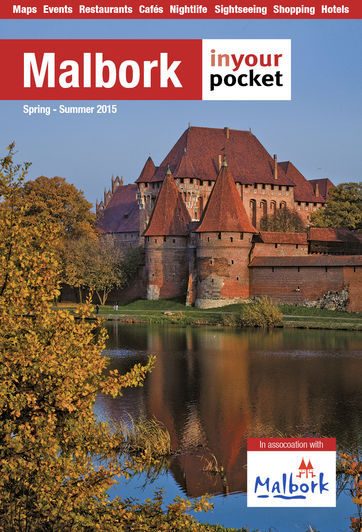Castle
The knights’ power began to wane with defeat at the Battle of Grunwald in 1410 and the castle became the property of the Polish crown in 1457 when unpaid knights seized it and sold it on. For the next three hundred years Malbork served as a Royal Residence, and became a stopover point for monarchs making the journey between Gdansk and Warsaw. This ended in 1772 when Poland was partitioned and Malbork fell under Prussian control. The castle was turned into a military barracks and a cotton workshop added to the Grand Masters Palace. For the next three decades old Malbork (now Marienburg again) took a hammering, with cloisters and windows bricked up, gateways enlarged and outhouses dismantled. That the castle survived further attempts at ‘modernization’ was thanks only to a protracted campaign by the citizens of Berlin. Spurred by this public outcry the Prussian state embarked on something of a U-turn, and a huge programme of restoration was undertaken. The results were impressive, and by the early 20th century much of the castle had regained its original look.
But the 20th century wasn’t kind to Malbork. On May 1, 1933 the swastika was raised over the castle, and for the next twelve years it was to become a favourite haunt of high-ranking Nazis. Plans were drafted to build an amphitheatre in the castle grounds, and it was in the Great Refectory that Nazi Gauleiter Albert Forster made a landmark speech in 1939 announcing that the territories on the left bank of the Wisla were to be incorporated into the Reich. Malbork’s grandeur wasn’t lost on the Nazis, and for the next few years its imposing courtyards and halls were used for swearing in ceremonies by the Hitler Youth and League of German Girls. With the tide of war turning steps were taken to protect Malbork, and in 1944 all stained glass was painstakingly removed. Even still, Malbork and its castle were smashed as the Marienburg Task Force and 2nd Russian Strike Force faced off in 1945. Over half the castle was destroyed, and black and white pictures from the day show the castle as little more than a desolate set of ruins. With no hope in sight the retreating Nazis dynamited the bridges spanning the Nogat, and the Siege of Malbork was lifted.
This all left Malbork in bad shape, with the brunt of the damage affecting the east side. Plundered by looters and abandoned by the state - who understandably had the unenvious task of rebuilding what was left of Poland - Malbork fell into abject decline. Finally, on January 1,1961, the Malbork Castle Museum was founded and restoration work given the green light. It was a huge effort, but the meticulous restoration work was finally rewarded in 1997 when the castle was recognised by UNESCO as a World Heritage Site.
Refine your search
Choose Categories
Castle
Cemeteries
Churches
Monuments
Old Town
Places of interest
Tour Guides
Tourist Information
Choose Amenities
City card
Submit


